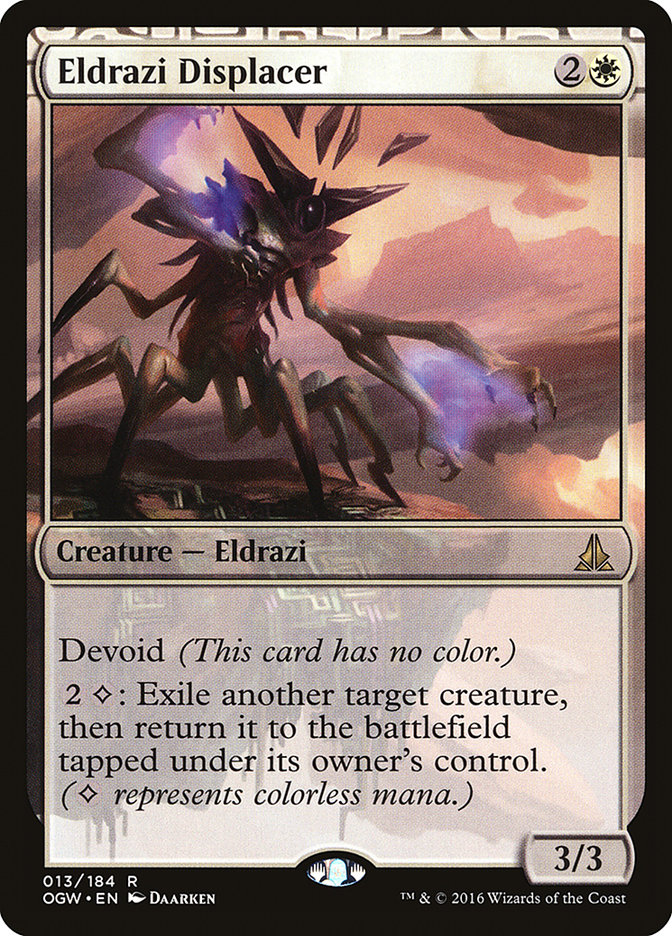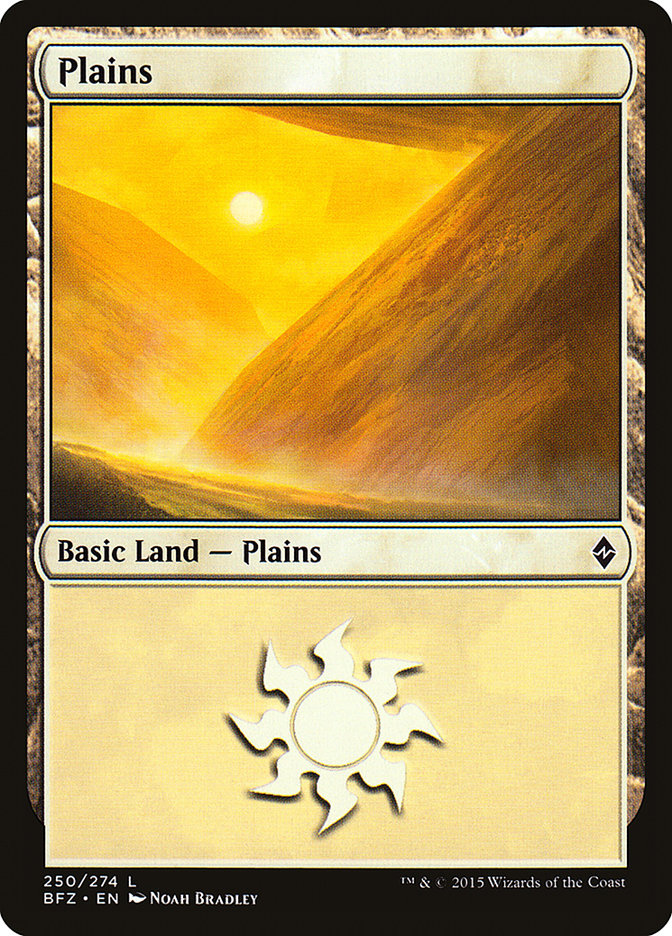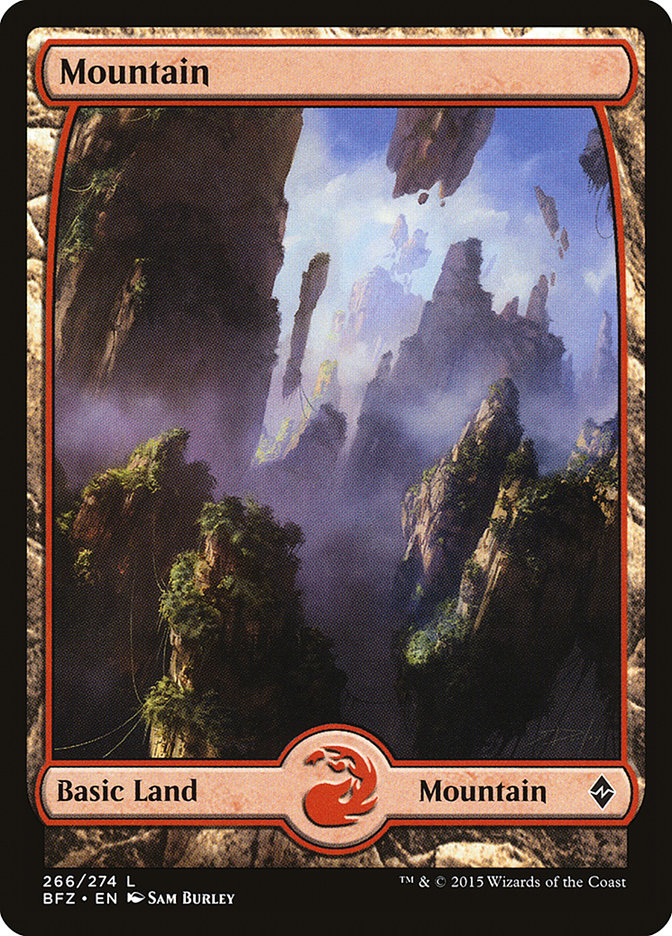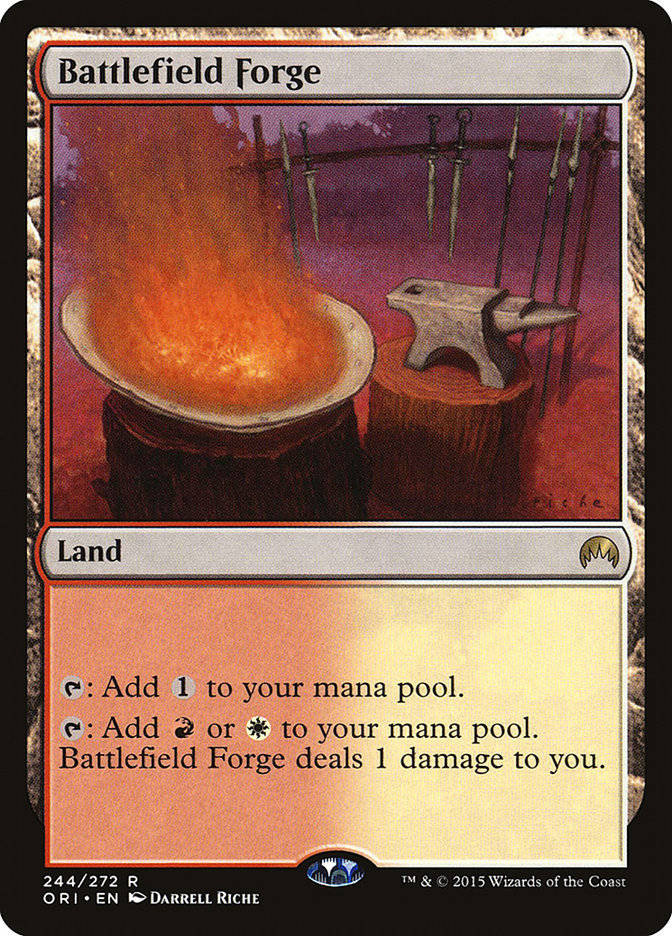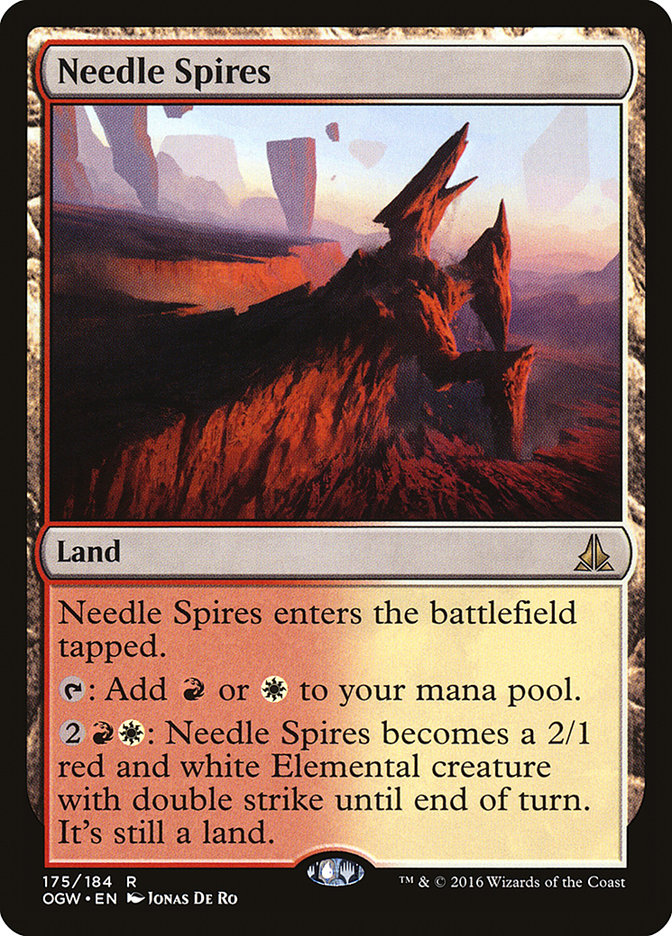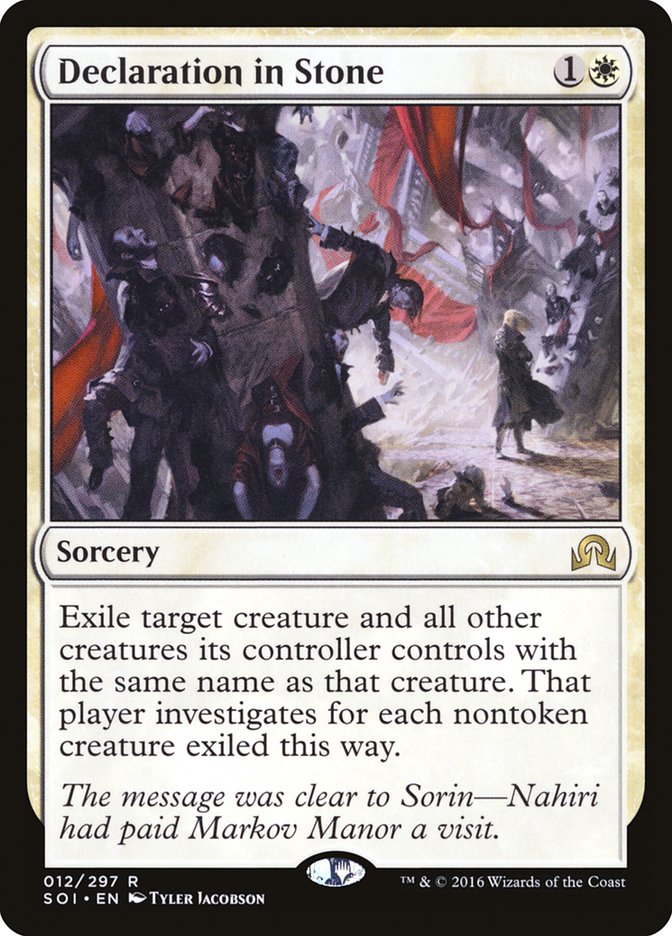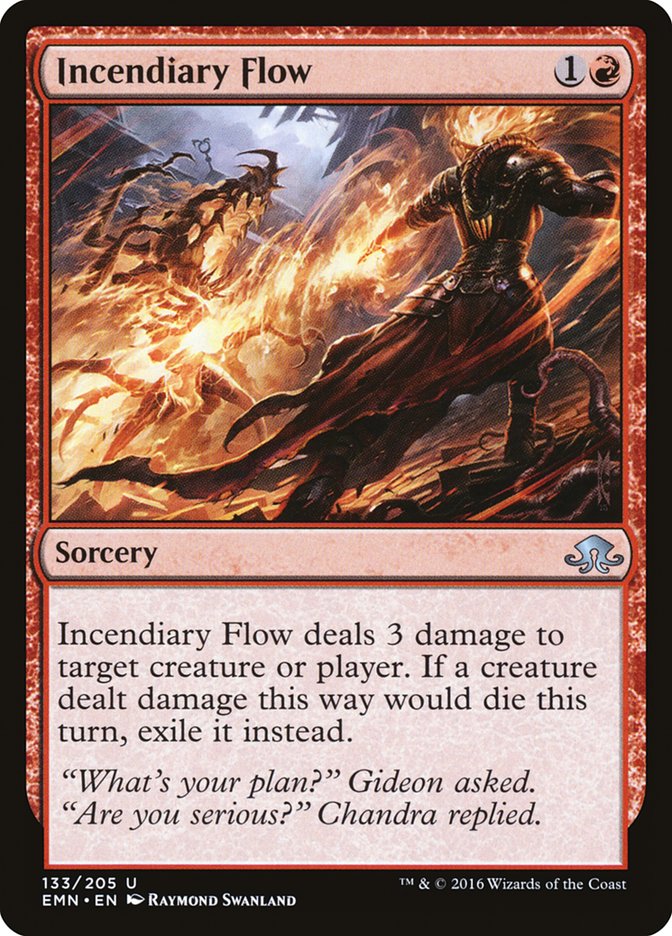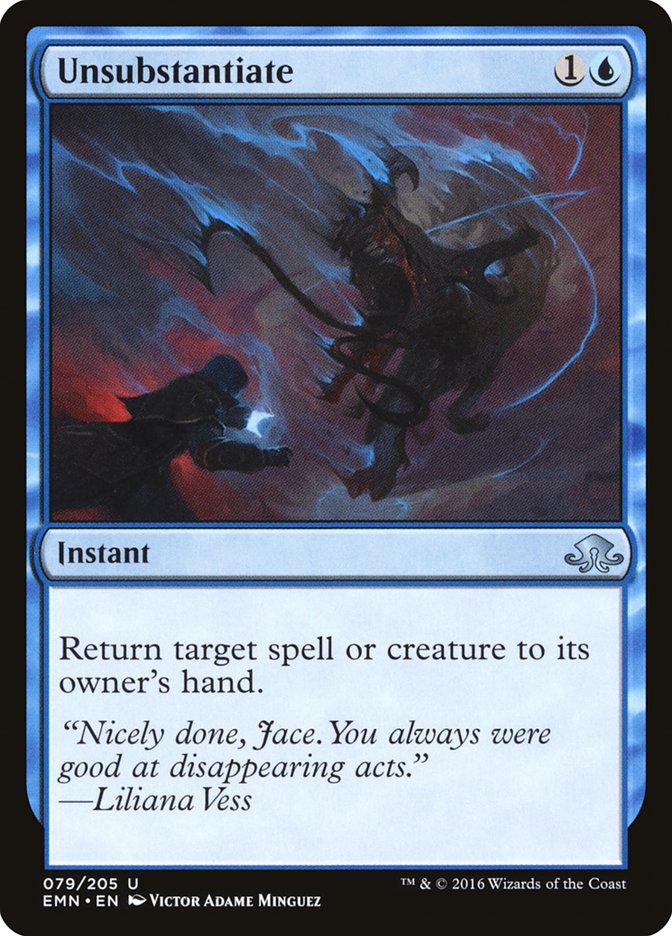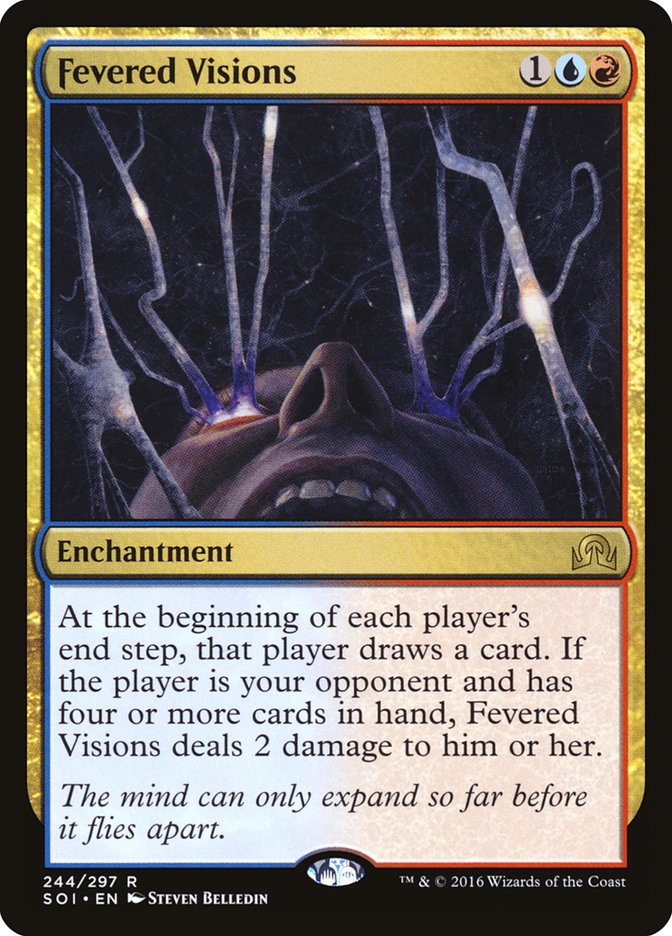Standard isn’t broken. Standard isn’t solved. What is it, then?
A challenge.
Last week I lamented the crippling oppression of flash-based decks spearheaded by this joker and its Company of nonsense, and last weekend’s #SCGBALT on the SCG Tour® reinforced this with sixteen copies of each card making the Top 8 in the Standard Open. These results can be seem to herald a future where, at least for the next few weeks until the arrival of Kaladesh, Collected Company and putting creatures onto the battlefield at instant speed will carry the day.
For brewers that crave variety, choice, and a battlefield on which they can test their creations without the fear of these high-level decks interfering with their fun, that future looks dark. However, the strain of a top-level deck on brewers is not unfamiliar. Players and deckbuilders adapt, create new strategies, and eventually, balance is returned. It’s a tall order, but we’ve seen it before.
But what if you’re just starting to brew decks? Maybe you’re new to Magic, or you’ve been playing for a while but you’ve always used proven, successful decks instead of striking out on your own? Maybe you’d tried brewing, became frustrated with the grind, and you’ve given up on trying to figure out another way?
I’ve met players that fit each of those descriptions, and I assure you, all of you can become successful brewers and get so much more out of the game than you might otherwise see. Depending on the way you brew, the following two ratios may help you start to quantify exactly how much brewing your doing and how to manage it.
The Uniqueness Ratio and the Read-the-Card Ratio
Brewing doesn’t have to be groundbreaking to be brewing. Take a look at these two Bant Company lists from #SCGBALT.
Creatures (27)
- 4 Reflector Mage
- 2 Eldrazi Displacer
- 4 Sylvan Advocate
- 2 Archangel Avacyn
- 3 Tireless Tracker
- 3 Duskwatch Recruiter
- 2 Thalia, Heretic Cathar
- 4 Spell Queller
- 3 Selfless Spirit
Lands (25)
Spells (8)

Creatures (27)
- 1 Nissa, Vastwood Seer
- 4 Reflector Mage
- 4 Sylvan Advocate
- 2 Archangel Avacyn
- 2 Tireless Tracker
- 3 Duskwatch Recruiter
- 3 Thalia, Heretic Cathar
- 4 Spell Queller
- 4 Selfless Spirit
Lands (25)
Spells (8)

Most Bant Company pilots would agree that the current core of Bant Company consists of five playsets: Dromoka’s Command, Collected Company, Sylvan Advocate, Reflector Mage, and Spell Queller. Critical stalemate-breakers like Duskwatch Recruiter, Tireless Tracker, and Archangel Avacyn feature in nearly the same quantities in these two decks, comprising seven or eight more cards.
Taken as an average, this means that almost every Bant Collected Company deck already has 75% or more of the same spells in the maindeck, leaving between seven to nine creatures as “brewable.” Ethan’s deck kept it simple, moving the legendary path with a combination of early pressure and a stronger mirror match with Thalia, Heretic Cathar and Nissa, Vastwood Seer. Zachary Plott, however, decided that being able to impact the battlefield in the long game was more important, stretching his manabase harder to support two copies of Eldrazi Displacer and its activated abilities, plus one more Tireless Tracker and a fourth copy in the sideboard. Both obviously did very well, but I’d still call this brewing.
You see this all the time; you’ll go to a Friday Night Magic or SCG Game Night and sit across from a guy named Joseph playing what appears to be Tom Ross’s pre-Eldritch Moon R/W Humans deck. You ask them if it’s Tom Ross’s list, either to make conversation or to attempt to get a small amount of informational advantage, and you got a response of “Well, it’s like Tom’s list, but I’ve made some adjustments of my own,” say, by replacing Declaration in Stone with Incendiary Flow and adding more red sources in the maindeck to help close those grindy games using direct damage. The “shell” of R/W Humans, as we call it, of Tom Ross’s deck is still there; the pilot just made some changes and potentially increased what I call its “uniqueness ratio.”
There’s a basis for this ratio in simple percentages. If you have a theoretically perfect 60-card deck, all 60 cards in that deck will be relevant at all times and will be powerful no matter when you draw them. A deck of all basic lands or 60 Chimney Imps has no relevance whatsoever because no combination of cards within those decks will be able to effectively impact the game. The difference between these is its “uniqueness ratio,” that is, the difference between the most optimized version of a decklist and a pile of nonsense.
This concept is kept in check by one of the most fundamental concepts of Magic: the draw step. Let’s go back to our opponent Joe and our good friend Tom Ross. If they’re playing very similar lists, the chance for them getting the same opening hand, following the same lines of play, and drawing the same cards is higher, and because Tom Ross has had success, Joe will have more success, at least from a purely deckbuilding perspective. The more we deviate, that is, the higher the uniqueness ratio, we are statistically less likely to draw what Tom Ross believes are the most objectively powerful and synergetic cards in his deck chosen from the pool of Standard-playable cards.
This is where the brewing comes in.
If you have a tried and true deck, you are effectively introducing deviations when you change a card from one to the next, but you are doing so under the assumption that there is a benefit to be gained by doing so. If Tom Ross played zero copies of Incendiary Flow and you play four, you are probably doing so because you believe that the opportunity cost of giving up access to a spell that hits creatures, potentially multiple creatures at once, with four or more toughness is less than making your mana less reliable, closing the game through direct damage, and denying your opponent the opportunity to draw cards of the Clues you would create. Who knows? You might be right!
This, however, is the essence of brewing, especially brewing in Standard: making calculated decisions that you believe are better-suited to answer a problem than those best decks established by the most experienced professionals. It’s a big hill to climb, but every brewer lives to scale it.
Then there’s the “read-the-card” ratio, a considerably more subjective and abstract measurement of the percentage of cards in your deck that your opponent might literally or figuratively read as you cast, reminding (or informing them for the first time) what the card does. This ratio applies whether you’re starting from scratch or modifying an existing, known archetype. Maybe you just got a cool card in a booster pack that you didn’t even know existed and wanted to test it out, so you buy a couple more copies from your local shop or trade with your neighbor and try it out. The more cards in your deck that make your average opponent reach across the table for them to read, the higher the “read-the-card” ratio.
Alternatively, if you’re like me, you like using unknown cards, often just for the sake of being different. Thus, the decks I tend to create usually have high “read-the-card” ratios because I enjoy using cards that appear to be (and often are) inferior and are thus less played, which often means they’re objectively less powerful or more conditional. This, and I cannot emphasize this enough, is a calculated, conscious acknowledgment that directly impacts my deckbuilding decisions. People brew for many reasons, whether it’s to heighten their game, try something new, or just to be different. All of them are valid, and all of them are important to help improve your game.
Creatures (18)
- 1 Elvish Visionary
- 4 Den Protector
- 2 Jace, Vryn's Prodigy
- 2 Nissa, Vastwood Seer
- 1 Bounding Krasis
- 1 Hangarback Walker
- 1 Void Grafter
- 1 Emrakul, the Promised End
- 1 Ishkanah, Grafwidow
- 4 Noose Constrictor
Planeswalkers (2)
Lands (25)
Spells (15)

For me, this was one of the more exciting decks of #SCGBALT. Cory Dissinger piloted a deck with a fairly high read-the-card ratio, effectively establishing a new deck archetype for the duration of Standard, regardless of its subsequent high-profile success. From now until the release of Kaladesh, players savvy to this list will recognize it as distinct from anything else.
This deck was really fun to watch, and I love the incorporation of lots of otherwise never-used cards like Noose Constrictor, Blighted Woodland, the namesake Crush of Tentacles, and even the oft-forgotten Kiora, Master of the Depths. This gets me excited, because it means there’s verifiable power hidden in these cards that just need the right deck to shine. However, the more this deck becomes a known quantity, as is true with all frequently-played decks, the lower its “read-the-card” ratio, as people become more familiar with the exact text of each card without having to remind themselves.
The Ratios Applied to Deckbuilding
As a point of personal pride and as a way to preserve my own sense of adventure, the uniqueness ratio does not often apply to the way I build decks, as I often start simply, usually with a newer Magic card and potential interactions it has with other cards in the format. However, it’s useful when I evaluate decks, whether I’m in the middle of the game or I’m helping a fellow build or refine a deck.
That means that the “read-the-card” ratio is much more important, and to demonstrate that, I propose a new archetype in the vein of Crush of Tentacles, though without a single copy of that spell.
This card got a lot of press when it was first spoiled, but after a few weeks, it’s barely a blip on the radar in the seemingly defunct U/W Spirits decks like those piloted by Jeff Hoogland. It feels a lot like Remand, a Modern staple, and it comes with the option to Unsummon a creature instead, giving it a high level of abstract power and flexibility. When this card was spoiled, it seemed like a tempo player’s dream come true. As I share today’s list, I feel like I was kind of right.
I got a fever, and the only prescription is more card draw.
Fevered Visions was the cornerstone of one of my first and most successful decks in Shadows over Innistrad Standard. The Grixis Madness deck I shared several months ago had plenty of removal, sustain, and variety to deplete a lot of opponents’ life totals, but in the end, Fevered Visions was a way to put more cards in my hand that I could use than would go into my opponent’s hand. This time, with a card that can effectively undo a player’s entire turn and force a card back to their hand, Fevered Visions seems like a sure-fire way to close out the game.
This little critter was one of my favorite flip cards spoiled from Eldritch Moon. On the front side, it was a mana producer in blue, albeit a limited one, and on its back side, it was a savage Jace’s Sanctum that got more powerful for every spell you cast. The combination of the plan to cast lots of instants to keep my opponent’s hand full and the multiple ways I could see supporting putting my cards in the graveyard so the Homunculus could reliably become an Eldrazi.
With that and enough bounce spells to make Temporal Adept jealous, let’s put together a list with a lofty “read-the-card” ratio.
Spells (34)
- 4 Anticipate
- 4 Prism Ring
- 4 Scatter to the Winds
- 4 Clutch of Currents
- 4 Grip of the Roil
- 4 Engulf the Shore
- 4 Fevered Visions
- 2 Nagging Thoughts
- 4 Unsubstantiate
Sideboard

This deck was actually way better than I thought it would be and had a lot of depth despite being a fairly simple and straightforward deck at first glance. It had a lot of sustain against every type of deck, doing especially well against midrange and even (that’s right) Bant Company. While it had difficulty closing the game, it was very effective at slowing it down to a crawl, and Fevered Visions had to do most of the heavy lifting. As long as you prioritize taking it in card selection spells like Anticipate, you’ll have all the energy you need. Moreover, Curious Homunculus was a great card after the smoke cleared, easily flipping into a 3/4; thanks to prowess it frequently wasn’t bounced with Engulf the Shore, providing more pressure.
You know another good thing about this deck? It is a hilariously inexpensive deck: $28.39 will buy you the entire list as of yesterday, with a whopping $2.20 manabase and a maximum card cost of $1.49 for Engulf the Shore.
That brings up one final point; sometimes people brew because, well, that’s what they can afford. Many players do contribute a considerable amount of their disposable income to Magic singles, drafts, and Constructed tournaments, but some people brew because that’s their only, or even their preferred, way to play the game.
The uniqueness ratio and can help you determine exactly how much of your deck is optimized and help you analyze the risks your taking. The “read-the-card” ratio, amongst other things, will tell you how excited I’ll be to see what you’ve got brewing!
Last Week’s Comments
In preparing to combat Spell Queller, I’d created a Wastes-oriented deck using the superior efficiency and power of Walker of the Wastes to get past the relatively low toughness of Spirits.
Regarding Walker of the Wastes, does it beat Reflector Mage? A five drop that just gets bounced is scary. – Kyle Murphy
Right you are, Kyle. In further testing, Reflector Mage turned out to be an Achilles’ heel. Removal wasn’t a problem as much thanks to Pulse of Murasa, but losing five mana and losing the opportunity to block and/or apply pressure was incredibly brutal. The deck performed well against lists that did not have dedicated removal or couldn’t draw Reflector Mage, but that’s a dangerous game to play.
Eldrazi Displacer and Spell Queller do not work. Spell Queller has to target if it is able to, and as Eldrazi Displacer is an instant blink, the spell would still be on the stack to target. – Guy Baldwin
As I attempted to provide a brewing outlet to justify ever using Spell Queller outside of its immense abstract power, I claimed that Eldrazi Displacer and Spell Queller would work in much the same way that using Saving Grace on Fiend Hunter allows the creature to be exiled after the leave-the-battlefield trigger, thus sending it into oblivion forever. Because of the way Spell Queller works, if you move to counter the spell and blink it, the spell will reappear on the stack and the Queller’s enter-the-battlefield trigger must target it. See? Nothing to like about the Spirit.
Brewing is a great exercise, no matter where you are in your Magic career. What tools and tricks do you use to brew? Has the Curious Homunculus caught your eye, too?




